Nested frameworks
With a multiplicity of approaches all attempting, in their different ways, to introduce more progressive thinking into the practice of services of all kinds, there are many approaches and frameworks that have much in common with the PIEs approach.
It may then be hard to see whether - and how - they may all work together, or instead be seen as options, or worse - as rivals for our limited time in the 'attention economy'.
Yet we do find that the blend of flexibility, breadth and precision in the PIEs 2.0 framework means that it is often adopted as a practical tool to operationalise and connect other approaches.

A Venn diagram of different perspectives
It is often more helpful to see these multiple options more as simply different perspectives on much the same territory; or sometimes even as the same essential approach, simply operating in different spheres, with different language (HERE).
One way to conceptualise this is via an imaginary Venn diagram, in which all the various approaches and frameworks can be seen, at the same time, as different windows on to a complex picture. Each adopts a particular perspective to illuminates a particular aspect.
We can then illustrate this ‘Venn diagram’ idea with two or three examples.
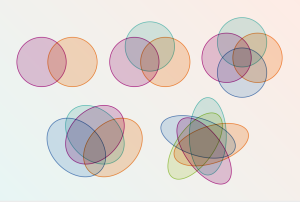
NB: This image was created by Amanda Montañez for Scientific American (HERE)
PIEs and Trauma Informed Care
PIEs and Trauma Informed Care (TIC) are very close in practice and in principle (HERE). PIE can then be - as it often has been - seen as a particular example of trauma informed care, as it is operationalised in practice in the specific context of homelessness services, and other such 'environments'. As this genuinely was the original context in which PIEs One (HERE) was developed, this description of the relationship works quite well.
Alternatively, using the PIEs 2.o framework we can see the understanding of trauma as simply one particularly useful 'psychological model' (HERE) amongst the many others that a psychologically informed environment might need to consider and perhaps adopt to ‘inform’ its work. From this perspective, it is the PIE that is the bigger picture, and TIC a useful set of ideas within its broader scope.
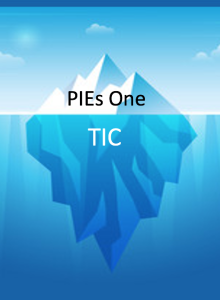
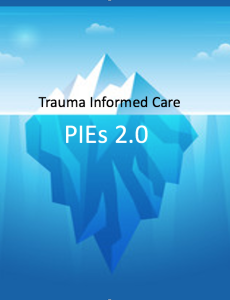
Human Learning Systems (HERE).
The Human Learning Systems (HLS) approach was developed by Toby Lowe and his colleagues at Collaborate, then at the Centre for Public Impact, and currently with colleagues at Manchester Metropolitan University's Public Services Research Unit (PERU*)
HLS is an example of a way of working with complexity that has many points of interface with the broader PIEs 2.0 model. Both emphasise the central significance of dialogue and of building relationships in overcoming the current tendency to work - and to fund services - in silos (HERE)
Both also aim to work at multiple levels, from provider services to local network building, to commissioning and the strata of national policy.
HLS in the PIEs framework
Within the PIEs 2.0 framework, HLS can be seen as an improved psychological model (HERE) for commissioning (HERE) , leading to sector engagement (HERE) in a culture of enquiry (HERE) looking, in as much detail as may be needed (HERE) , at systems and pathways (HERE) and connected networks (HERE), emergent and collective training and support needs (HERE) etc etc.
Meanwhile, PIEs One can be seen as outlining the kind of relationship-based practice in local services that might well result from the discussions, whether at local or national level, from a HLS collaboration.
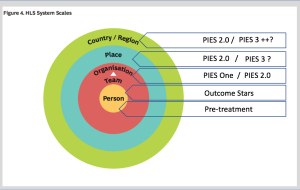
Like the PIEs 2.0 framework, HLS aims to work at all system scales, from personal engagement to national policy.
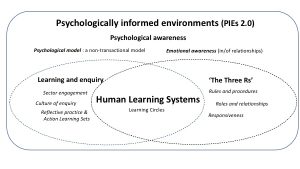
Collaboration is a complex need. (HERE)
The PIEs framework is designed to assist services in meeting complex needs. But for services trying to work alongside others, in the 'eco-system' or available services, improved inter-service collaboration is itself a 'complex need'.
Bringing together so many points of view will not be a recipe for instant harmony. For this reason it is probably essential to recognise the emotional dimension in working relationships between agencies, sectors, budget holders and others with an interest in keeping system change manageable.

We would do well to remember the Babel fish, the invention of Douglas Adams in his sci fi books on the Hitchhiker's Guide to the Galaxy.
According to Adams, by allowing all people to understand each other, "....the poor Babel fish, by effectively removing all barriers to communication between different races and cultures, has caused more and bloodier wars than anything else in the history of creation."
It is important therefore to recognise the emotional challenges in trying to work in new ways, and explore new territory - with others.
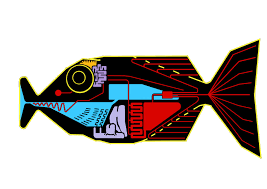
Worked examples of the PIEs approach and framework in other contexts
Here we will outline a few examples, from some of the closest affinity networks.
Then we can look for and explore their commonalities, and the ways they can support each other in different contexts, or at different stages in development, aiming for an overall synergy.
Closest in spirit to the PIEs approach
Below we have a selection of some of the frameworks that seem closest in spirit to the PIEs approach. In almost every case, we can see the PIE as an examples off these approaches in practice; or equally well see these as examples of the `PIE approach, in a particular context.
In human-centred work
In systemic service design
- Enabling Environments (HERE)
- The Design Council's 'Double Diamond' (HERE)
- The Centre for Public Impact (HERE)
In working constructively with complexity
- Human Learning Systems (HERE)
- The Dept Health's Personality Disorder programme (HERE)
- Appreciative Enquiry (HERE)
- The Cynefin framework (HERE)
afdv
